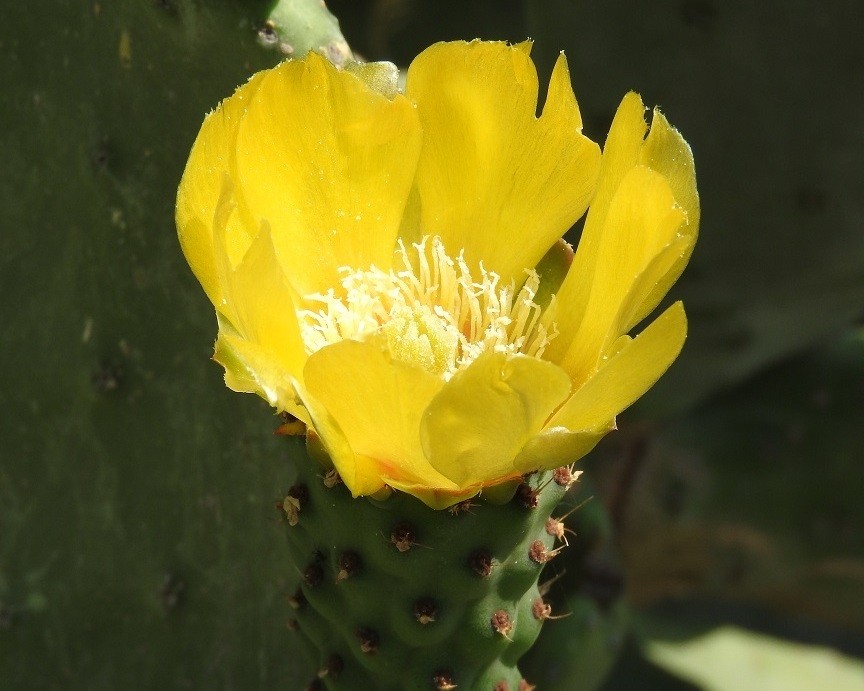Chaparral prickly pear
(Opuntia oricola)

Description
Opuntia oricola is a species of prickly pear cactus known by the common name chaparral prickly pear. It is native to southern California and Baja California, where it grows in coastal sage scrub and chaparral habitats. Opuntia oricola is a large treelike cactus often exceeding 2 meters in height. The branches are made up of rounded flat segments up to 25 centimeters long. It is covered in clusters of curved, yellowish spines usually around 2 centimeters long. The flowers are yellow, sometimes orange-tinged. The spherical fruit is purplish red on the outside, whitish and juicy inside, and up to 6 centimeters long. It was common along the coasts and adjacent inland areas of California, but development has reduced its populations. Opuntia, commonly called prickly pear or pear cactus, is a genus of flowering plants in the cactus family Cactaceae. Prickly pears are also known as tuna (fruit), sabra, nopal (paddle, plural nopales) from the Nahuatl word nōpalli for the pads, or nostle, from the Nahuatl word nōchtli for the fruit; or paddle cactus. The genus is named for the Ancient Greek city of Opus, where, according to Theophrastus, an edible plant grew and could be propagated by rooting its leaves. The most common culinary species is the Indian fig opuntia (O. ficus-indica). O. ficus-indica is a large, trunk-forming, segmented cactus that may grow to 5–7 m (16–23 ft) with a crown of over 3 m (10 ft) in diameter and a trunk diameter of 1 m (1 yd). Cladodes (large pads) are green to blue-green, bearing few spines up to 2.5 cm (1 in) or may be spineless. Prickly pears typically grow with flat, rounded cladodes (also called platyclades) containing large, smooth, fixed spines and small, hairlike prickles called glochids that readily adhere to skin or hair, then detach from the plant. The flowers are typically large, axillary, solitary, bisexual, and epiperigynous, with a perianth consisting of distinct, spirally arranged tepals and a hypanthium. The stamens are numerous and in spiral or whorled clusters, and the gynoecium has numerous inferior ovaries per carpel. Placentation is parietal, and the fruit is a berry with arillate seeds. Prickly pear species can vary greatly in habit; most are shrubs, but some, such as Opuntia galapageia of the Galápagos, are trees.
Taxonomic tree:







